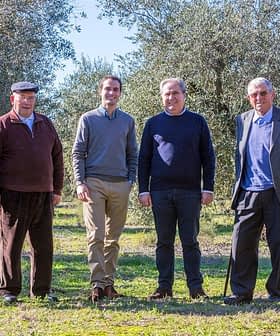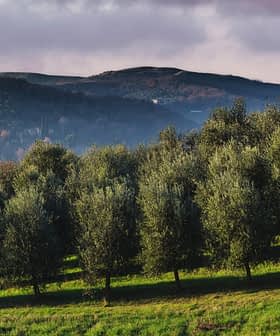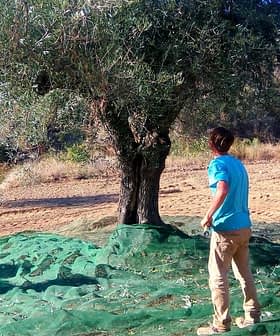Reactions Underscore Super Premium's Long Road Ahead

It was quite a day for olive oil in the news. Articles on the subject were published yesterday in two of the most-read American newspapers — The Washington Post and The New York Times.
The title of The Times article must have sent a warm ping through the hearts of California olive oil producers who have set their sites on chipping away at the 99 percent market share enjoyed by European exporters.
“California’s Olive Oils Challenge Europe’s” was how the title appeared online, while in print, it was shortened slightly to “Challenging Imported Olive Oils.” Either way, it was a heading thoroughly enjoyed by many in the Golden State.
But the well-written article was refreshingly even-handed when so much coverage of the Old versus New World olive oil drama smacks of self-interest and sensationalism.
Throwing the brakes on what seemed yet another rehash of last year’s Davis study, Nancy Harmon Jenkins (indirectly cast as an “Old World Partisan” — is that on your business card Nancy?) reasoned, “You can’t decide that all imported oils are suspect and dismiss thousands of years of craftsmanship.“
Another exchange began with New York olive oil importer Martina Rossi Kenworthy reportedly saying that the high-density farming championed by New World upstarts robbed trees of vital nutrients. That was called “baloney” by Davis farm advisor Paul Vossen. But balance was regained with a cautious assessment by Deborah Rogers, who said, “They can make good oils with high density, but it remains to be seen if they can make great oils.”
Sticking unnecessarily to the standard olive oil article playbook, The Times finished the story with a taste test. This one was led by the New York importer Kenworthy and her colleague at Gustiamo, Stefano Noceti, who, not surprisingly, could pick out in a blind test their own Italian top sellers among the few sampled. But in perhaps a hesitant nod to the inevitable, they also liked the California Olive Ranch Arbequina.
In a modern refrain, The Times writer, Julia Moskin, admitted was “melodramatic,” olive oil, she wrote, “deteriorates” as soon as it is bottled. While scientifically true, an average reader gets the impression that she will be able to taste the difference between an extra virgin olive oil bottled eight months ago and one bottled two months ago (and know which to prefer) — or that high-quality olive oil, if a year into its shelf life, will be a shadow of its former self and significantly less healthful.
The article, however, left readers with sound advice: personal taste and freshness are the best guides when choosing the right olive oil.
The Washington Post article, written by Jane Black, read like a brochure for the Association 3E — the initiative spearheaded by Villa Campestri’s Paulo Pasquali, Culinary Institute of America Vice President Greg Dreschner, Milan educator Claudio Peri and Gaea CEO Aris Kefalogiannis — and their bid to define the top tier of olive oil quality.
“73 percent of the top five brands of imported extra-virgin olive oil failed to meet accepted international standards for extra-virgin,” the article dove in, unable to resist beginning with another review of the Davis study and leaving many scratching their heads at what 73 percent of five equalled.
Both articles featured interviews with globe-trotting investigative author Tom Mueller whose much-anticipated book Extra Virginity is due in December and worth the wait.
But while the Washington Post article examined the lost meaning of the extra virgin classification, the need for a new certification for true olive oil quality and how to have an EVOO “epiphany,” readers largely latched on to the price tag, expressing bewilderment and annoyance in their comments.
“I can’t buy premium olive oil on my budget for everyday cooking, just as I can’t buy premium vintage wine,” one reader lamented, “What are we supposed to use to cook with – not necessarily adore?”
Another said “Paying that much money for such a small amount of anything seems pretty insane to me, unless it is enough to flavor about 200 meals or something.”
While a few commenters chimed in with memories of Tuscan holidays, or their own kitchen taste tests, there was little support among the few dozen readers for the super-premium concept or super-premium prices.
A reader wrote, “Sounds like a racket, designed for the ‘Age of Affluence’ that is now over. $50/half liter. That’s bankruptcy in a bottle. Leave the ‘super-premium’ to the Wall Street racketeers and yuppies who don’t know any better. Taste is subjective: a good $100 wine does not taste any better than a good $11 wine, enough with the food snobbery. We’re in a depression!”
And in a funny and tragic comment, a reader asked, “What kind of olive oil does McDonald’s use? All their stuff tastes real good.”
The most vocal readers are often overrepresented in comment sections. Still, the reactions might underscore the rough road ahead for the super-premium initiative, especially in the United States, where consumers know little about olive oil, much less why it should cost more than two dollars per tablespoon.
And just as the International Olive Council kicked off its long-anticipated North American promotional campaign liking olive oil to fashion at a time when Americans couldn’t feel worse about their economic futures, super-premium’s aspirational pitch faces the same tough audience.
Marketers will first need to explain to Americans what olive oil is and how to use it, before they’ll have much success with the upsell.





